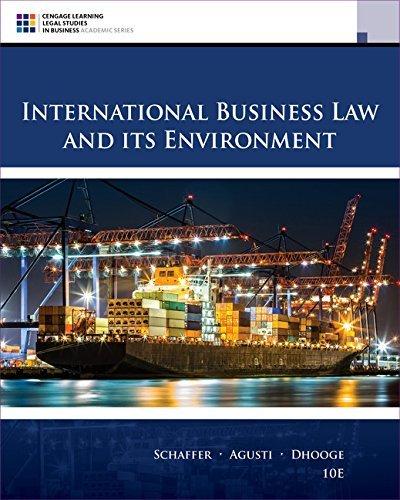You are attending a product development meeting at your company, a U.S. manufacturer of outdoor equipment. Your
Question:
Today's meeting was called to discuss the opportunity to quote a tent design and prices to Z-Mart Sporting Goods, potentially your largest customer. They want only one tent of your quality and brand name, and they are leaving most of the tent design up to you. However, it must sleep three or four people and leave enough head-room to dress. It can be either a heavier three-season or lighter four-season tent, so you have some flexibility there. Most importantly, it cannot retail for more than $400 or they're not interested. Their retail price is double their total wholesale cost. That means you cannot price the tent for one penny more than $200, including the cost of the tent, import duties, overhead, and all transportation and insurance to Z-Mart's warehouse. To do business with Z-Mart, and still make a profit, your CEO demands that every penny of costs be shaved. He estimates that if the tariff rate is any more than 5 or 6 percent, then Z-Mart's target price will be difficult to meet. He schedules the next meeting for tomorrow and asks you to make a presentation on how U.S. tariff and customs law will affect costs. He wants to know the following:
1. Generally speaking, what factors will determine the U.S. tariff rate on your tents?
2. To import the tent at the lowest rate, what class and kind of tent should it be? What should be its "principal use"?
3. What textile material should the tent be made from to achieve the lowest tariff?
4. Access the Customs Rulings Online Search System and search for your tent. Are you able to locate any actual classification rulings that might give you some guidance? Would you advise the CEO to obtain a ruling?
5. Based on your research what are the key design characteristics necessary to import the tents at the lowest tariff rate possible? Specifically, what are the requirements for square-foot floor space, height, weight, and carry size?
6. Although a search for new suppliers is impossible at this time, your CEO wants to know if the United States gives any tariff preferences for tents originating in certain countries. Are your tents eligible for a tariff preference under the GSP for developing countries? The Caribbean Basin Initiative? Israel? Singapore? What is the rate from Australia?
7. At the last minute, Z-Mart calls your CEO to ask if you can produce "pickup truck tents"-tents that fit into the bed of a pickup truck. He asks if you think they will be classified as "tents" or as "parts and accessories of motor vehicles" in Heading 8708. Can you find a previous customs ruling that you can cite to him?
Fantastic news! We've Found the answer you've been seeking!
Step by Step Answer:
Related Book For 

International Business Law And Its Environment
ISBN: 9781305972599
10th Edition
Authors: Richard Schaffer, Filiberto Agusti, Lucien J. Dhooge
Question Posted:





